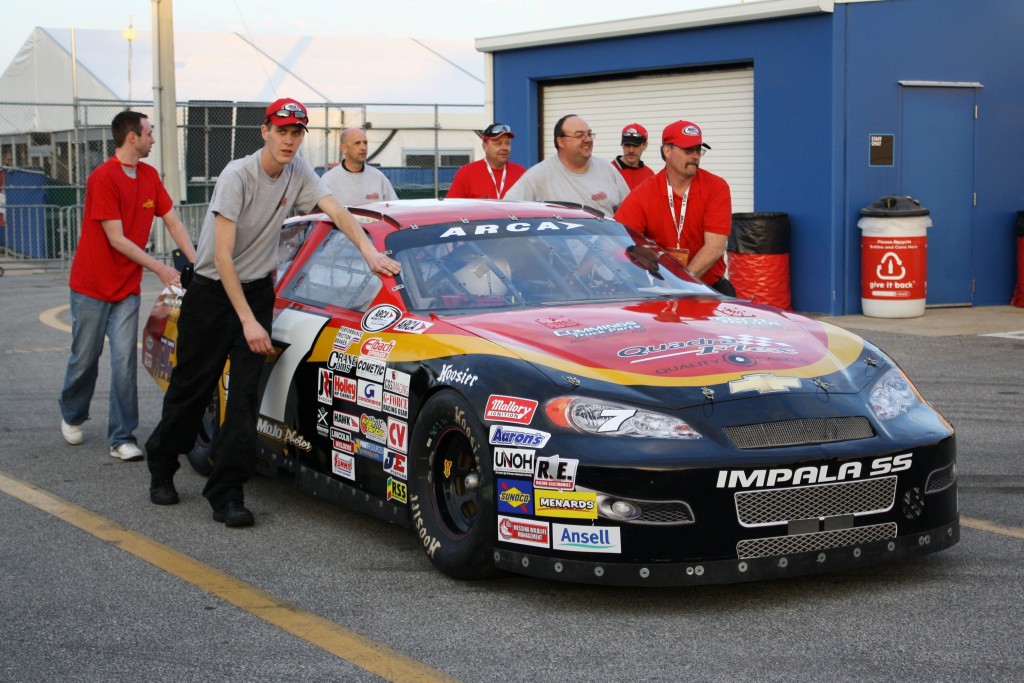Three Binghamton University engineering students participated in an professional automotive racing event at the Daytona International Speedway last Saturday.
The students worked with pit crews and drivers at the Lucas Oil Slick Mist 200, an annual 80-lap car race hosted by the American Race Car Association. The Feb. 18 race was a preliminary event for the Daytona 500, one of the most prestigious races in NASCAR, which is broadcasted nationally.
The students worked specifically on the electronic ignition, vehicle dynamics and aerodynamics for their respective cars.
Bob Dolezal, a senior majoring in mechanical engineering, and Rory Haggerty, a junior majoring in electrical engineering, were supposed to work on the No. 7 car, driven by Brent Cross. However, during tests, the car’s engine failed, which caused Cross to drop out of the race. Dolezal and Haggerty instead helped with the No. 13 car, driven by George Cushman.
Dolezal has done similar work in the past.
“I have been working on cars since I was 11, and have had a long experience with this type of work,” Dolezal said. “Motor sports is all I have ever really worked with, and it’s part of the reason why I am in mechanical engineering.”
Bryan Balch, a senior majoring in mechanical engineering, returned for a third time to work on the No. 55 car, driven by Paulie Harraka. Balch had participated in the pit crew last October and last summer in North Carolina. The car he worked on in the fall won at the Kansas International Speedway.
Balch, who is a long-time fan of racing, said he hopes to this experience as a stepping stone to a job in the motor sports industry.
“I hope this experience will someday lead to career in engineering race cars or normal passenger vehicles,” Balch said. “A lot of the current technology for today’s road cars is originally developed by race teams, and being on the cutting edge of vehicle development is where I want to take my career.”
The tasks the students performed allowed them to gain experience dealing with electrical and mechanical systems. The students also worked directly with engineers from various major automobile companies, as well as the drivers who participated in the race.
Balch explained some of the specific tasks he had to complete for the event.
“As a mechanic, I work with several other mechanics under our car chief and the crew chief to get the car ready for technical inspection and the race,” Balch said. “As a pit crew member, I help fuel the car during pit stops.”
Gary George, a mechanical engineering adjunct professor, arranged the positions for the three students. He said the the drivers and the pit crews were eager to involve the students.
“I hooked them up with the racers,” George said. “I have been involved with racing for over 40 years, and I was able to call a few people I know to get this thing going.”



